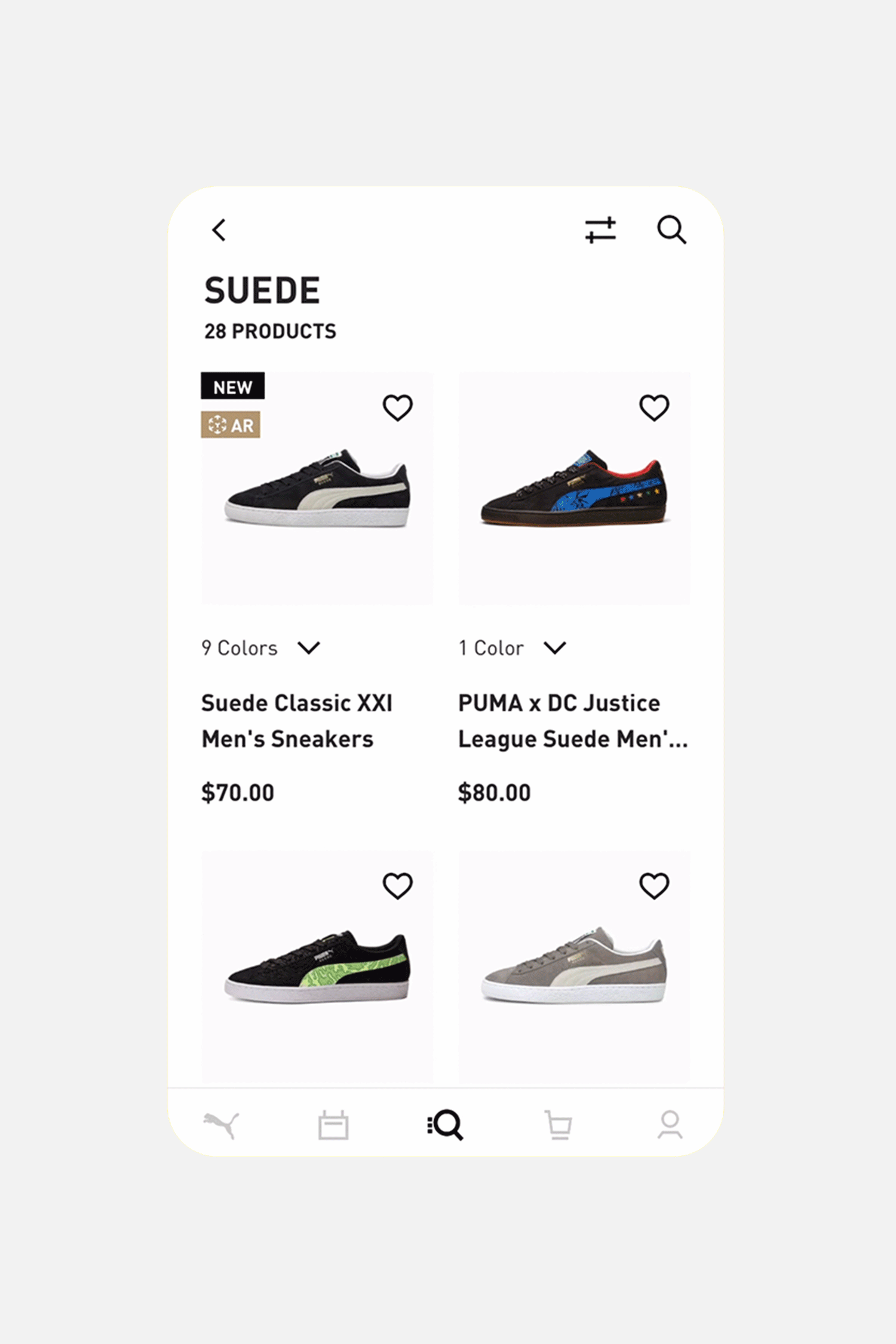To become a Vogue Business Member and receive the Technology Edit newsletter, click here.
Snapchat wants AR try-on to be a standard shopping tool so shoppers can wave their phones and try on the latest Puma hoodie.
The tech firm is opening up access to its AR technology, as well as expanding AR try-ons, in a bid to deepen its relationship with brands and retailers as social media platforms pivot to metaverse companies.
New tools will make it easier for brands to create three-dimensional, photorealistic versions of products, and easier for consumers to try these products. For the first time, brands can integrate these AR try-on tools within their own apps, meaning that they don’t have to develop or acquire this technology independently. Puma and Ralph Lauren are early testers. Snapchat users will also be able to more easily discover products to digitally try on, via Snap’s new “Dress Up” section, which is the first time it has created a specific destination for this type of content.
By letting other apps and developers use Snapchat’s technology outside of the Snapchat app for free, Snap hopes that AR adoption and development will expand. Despite being relatively mainstream, there is “unrealised potential”; only 3 per cent of US adults regularly use AR while shopping, while 39 per cent of respondents are interested in using it, according to a report this month from Insider Intelligence. “We want to empower use cases where the context would change the type of experience compared to what you would build for Snapchat,” says Carolina Arguelles Navas, Snap’s global AR product strategy and product marketing lead.
AR has long been a point of focus for Snap, which said at its annual summit on Thursday that since January of last year, more than 250 million people have used its AR shopping lenses more than 5 billion times. Increasingly, the company is leaning into its identity as a camera company, rather than a social media or advertising-driven company, as it sees a bigger opportunity in providing camera and AR-based infrastructure to brands and creators as extended reality and the metaverse proliferates. Many of these new updates make this aim more obvious, says Navas. “We want to be a business-to-business tech solution because of the value we can give brands,” she says. “We believe that AR is the future, and for that to happen, we want more partners and companies and people to build in AR and think about how that helps to solve new problems that we aren't solving on our own.”
Competitor Meta, owner of Instagram, has been more explicit in its pivot to a metaverse-focused and shopping-focused company. In recent earnings calls, Snap missed expectations for profit and sales, while Meta beat expectations. Both reported user growth; Snap reported 332 million daily active users while Meta reported 1.96 billion (it doesn’t typically break out Instagram user numbers). TikTok parent company Bytedance reports 1 billion monthly active users but does not offer daily figures.
Snapchat, similar to Pinterest, Instagram and TikTok, see fashion, beauty and retail as important industries. Already, social commerce currently drives more than 85 per cent of beauty e-commerce traffic, according to MikMak, which provides e-commerce software that tracks social media purchases. Forty per cent of shoppers originate from Facebook and Instagram, while 12 per cent are from Snapchat.
Social media remains a big driver for AR user growth, and provides opportunities to increase product visualisation and reduce returns within ecommerce, according to an April report on AR and virtual reality from Insider Intelligence. The market research company estimates there will be 35 million retail AR users in the US this year, nearly double compared to three years ago.
Snap sees opportunity in helping brands overcome the significant technical hurdle of translating products into AR-ready assets. Snapchat enables people to see realistic-looking assets in their own “world side” environments — such as is the case with bags — and to try them on digitally, such as with eyewear, shoes, makeup, and increasingly on-body apparel. It has made improvements to its 3D asset manager, thanks to its recent acquisition of 3D creation studio Vertebrae, and is adding a capability to fit flat product photography onto a user-submitted full-body selfie, thanks to a recent acquisition of startup Forma. Instead of real-time fitting on a moving image, this overlays traditional product imagery on a still image — an alternate, and perhaps more accessible, approach to AR try-on. People can also re-use a selfie that has been already created and saved.
Snapchat is building out sections of its app that are specifically product focused. With the new Dress Up feature, all of this content is routed to one place (similar to Instagram’s shopping tab). Brands who have integrated catalogues through Shopify can enable in-app purchases; others can add a link to click out to buy. While the AR tools are free, brands can pay to promote content to additional users; the long game is an eventual expansion into smart glasses.
“It’s a specific hub for all the fashion-related content, including fantastical fashion and practical,” Navas says. Brands can participate for free, and if they are using these tools, the content is automatically eligible for discovery. This also saves content that people have tried on; even when people share a try-on Snap with a friend, the person also has a link to try it on. People can save items to their favourites. This is a core part of the end-to-end shopping experience, Navas says.
Comments, questions or feedback? Email us at feedback@voguebusiness.com.
Snapchat bets on augmented reality to win at social commerce
